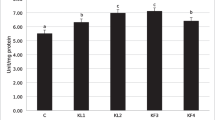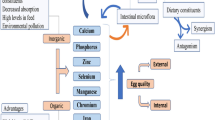Abstract
In this study, we report the concentrations of four trace elements in muscle and kidney tissues of sheep grown in an area with endemic fluorosis. Fifteen 3- to 4-year-old fluorotic sheep were selected for the study. Ten age-matched sheep with no sign of fluorosis were used as the control group. The animals were killed in a slaughterhouse in the village of Doğubeyazıt, located in the Ağrı province of Eastern Turkey, where kidney and muscle tissue samples were surgically obtained to be analyzed for copper, zinc, nickel, and iron. In muscle tissue of the fluorotic sheep, the copper levels were higher than those of the control group (p < 0.05). In the case of zinc, its levels were significantly higher in the controls than in the sheep with fluorosis (p < 0.01). No statistically significant differences were found in the muscle contents of nickel and zinc (p > 0.05). Compared to controls, the concentrations of zinc (0.01), iron (p < 0.05), and nickel (p < 0.05) were significantly higher in kidney tissues of fluorotic sheep, but there were no significant differences of the copper levels (p > 0.05). These results suggest that fluorosis significantly alters the mineral metabolism in muscle and kidney resulting in higher levels of mineral accumulation and excretion caused by fluoride intoxication. Further research shall focus on the enzymatic and metabolic activities of these and other trace elements.
Similar content being viewed by others
References
Dhar V, Bhatnagar M (2009) Physiology and toxicity of fluoride. Indian J Dent Res 20:350–355
Choubisa SL (2012) Status of fluorosis in animals. Proc Natl Acad Sci India Sect B Biol Sci 82:331–339
Moller IJ (1982) Fluorides and dental fluorosis. Int Dent J 32:135–147
Cavallo F, Gerber M, Marubini E (1991) Zinc and copper in breast cancer, a joint study in nothern Italy and southern France. Cancer 67:738–745
Prohaska JR (1987) Functions of trace elements in brain metabolism. Physiol 67:858–901
Gunal M (2006) The comparison of lead and nickel levels measured in tumor tissue in the cases of glioblastoma multiforme and benign meningioma. Istanbul, Turkey Ministry of Health, Psychiatric and Neurological Diseases Training and Research Hospital
Morton S, Robert DJ (1993) Unicam AAS Methods. Manual Issue 2 (05/93) University of Bristol UK
Mohiuddin SM, Reddy MV (1988) Histopathological changes in the visceral organs of sheep in fluoride toxicity. Ind J Anim Sci 58:699–702
Shashi P (1989) Fluoride toxicity and muscular manifestations. Histopathological effect in rabbits. Fluoride 22:72–77
Karaöz E, Gülle K, Mumcu EF, Gökçimen A, Öncü M (2003) The structural changes in second generation at the rats kidney and liver tissues which have experimentally acquired chronic fluorosis. Turk Klin Med Sci 23:129–134
Kanwar KC, Singh M (1981) Zinc, copper and manganese levels in various tissues following fluoride administration. Experientia 37:1328–1329
Krasowska A, Włostowski T (1992) The effect of high fluoride intake on tissue trace elements and histology of testicular tubules in the rat. Comp Biochem Physiol C 103:31–34
Tao X, Xu ZR, Wang YZ (2005) Effect of excessive dietary fluoride on nutrient digestibility and retention of iron, copper, zinc, and manganese in growing pigs. Biol Trace Elem Res 107:141–149
Liu K-t, Wang G-Q, Ma L-Y, Jang P, Xiao B-Y, Urumqi CZ, Xinjiang (1999) Adverse effects of combined arsenic and fluoride on liver and kidney in rats. Fluoride 32:243–247
Altuntaş A (2015) Excess minerals deficiency diseases. Publishing Ankara University Open Course Ware. http://acikders.ankara.edu.tr/course/view.php?id=22/
Kessab M, Hamlini A, Braun JP, Rico AG (1985) Experimental acute sodium fluoride poisoning in sheep. Renal, hepatic and metabolic effects. Toxicology 5:1025–1033
Author information
Authors and Affiliations
Corresponding author
Ethics declarations
Conflict of Interest
The authors declare no conflict of interest. All authors have read and approved the final manuscript.
Rights and permissions
About this article
Cite this article
Çetin, S., Yur, F. Levels of Trace Elements in Muscle and Kidney Tissues of Sheep with Fluorosis. Biol Trace Elem Res 174, 82–84 (2016). https://doi.org/10.1007/s12011-016-0694-3
Received:
Accepted:
Published:
Issue Date:
DOI: https://doi.org/10.1007/s12011-016-0694-3




